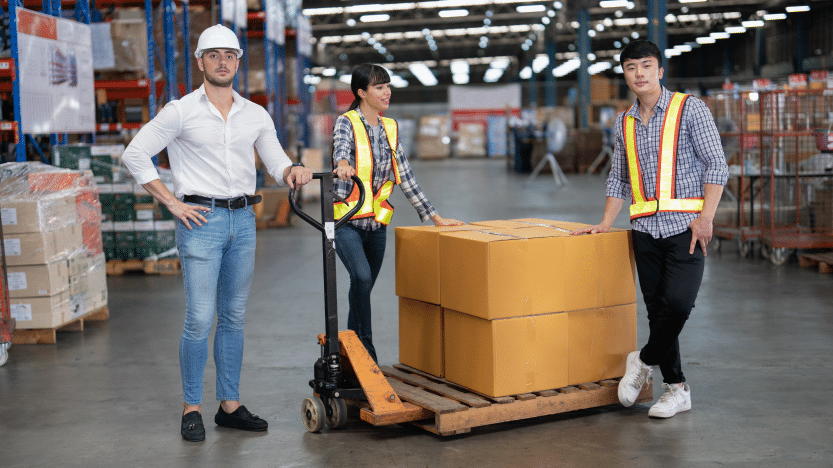When it comes to shipping industrial equipment from the United States to Singapore, there are several critical factors that shippers need to consider to ensure a smooth and successful process.
Industrial equipment often involves complex machinery, heavy and oversized items, and sensitive components, making the shipping process more challenging than standard freight. Here are the top five things to consider when shipping industrial equipment to Singapore from the USA:
Size and Weight of the Equipment
The size and weight of the industrial equipment play an important role in determining the shipping method and cost. Oversized or heavy equipment may require special handling, equipment, and permits for transportation.
It’s essential to accurately measure and weigh the equipment to choose the appropriate shipping method, whether it’s sea freight or air freight, OR may be a combination of both. For oversized equipment, you may need to consider breakbulk shipping or chartering a vessel, while less bulky items might be suitable for container shipping.
Value of the Equipment
Industrial equipment often represents a significant investment, and its value should be carefully considered when planning the shipment. It’s important to ensure that the equipment is adequately insured against loss, damage, or delays.
Additionally, proper valuation is essential for customs clearance and determining import duties and taxes in Singapore. Make sure to have all the necessary documentation, including commercial invoices and valuation certificates, to avoid any issues during customs clearance.
Urgency of the Shipment
The time sensitivity of the shipment is another critical factor to consider. If the equipment is needed urgently for a project or production in Singapore, you might opt for air freight, which is faster but more expensive than sea freight.
For less urgent shipments, sea freight offers a cost-effective solution, though transit times are longer. It’s important to plan the shipment well in advance and consider any potential delays, such as weather conditions, port congestion, or customs clearance processes, that could impact the delivery timeline.
Fragility of the Equipment
Industrial equipment can be delicate and prone to damage during transit. It’s essential to assess the fragility of the equipment and ensure that it is properly packed and secured for the journey.
This may involve using specialized packing materials, custom crating, and securing the equipment within the container to prevent movement. Consider working with a professional packing and crating service that has experience in handling industrial equipment to minimize the risk of damage.
Availability of Specialized Packing and Crating Services
Given the complexities of shipping industrial equipment, it’s important to have access to specialized packing and crating services. These services can provide custom solutions tailored to the specific needs of your equipment, ensuring its safety and security during transit.
Look for service providers with a proven track record in handling industrial equipment and who can offer comprehensive solutions, including packing, crating, loading, and unloading.
Shipping Options and Transit Times
Understanding the available shipping options and their respective transit times is important for planning your shipment. For industrial equipment, sea freight is often the most cost-effective option, especially for heavy and oversized items. However, it also has longer transit times compared to air freight.
If speed is a priority, air freight may be the preferred option, though it comes with higher costs. It’s important to evaluate the trade-offs between cost and speed to choose the best shipping method for your needs. Additionally, consider the frequency of sailings or flights, as this can impact the overall timeline of your shipment.
Insurance and Liability
Shipping industrial equipment involves risks, and it’s essential to have adequate insurance coverage to protect against potential losses or damages. Depending on the value and nature of the equipment, you may need to consider different types of insurance, such as all-risk coverage or specific perils coverage.
It’s also important to understand the liability of the carrier and other parties involved in the shipping process. Familiarize yourself with the terms and conditions of the shipping contract, including any limitations of liability, to ensure that your interests are adequately protected.
Logistics and Handling
The logistics and handling of industrial equipment require careful planning and coordination. This includes selecting the right mode of transportation, arranging for proper loading and unloading equipment, and coordinating the movement of the equipment from the point of origin to the final destination.
It’s important to work with experienced logistics providers who have expertise in handling industrial equipment and can manage the complexities of the shipping process. Effective communication and coordination among all parties involved are key to ensuring a smooth and efficient logistics operation.
Regulatory Compliance and Customs Clearance
Navigating the regulatory requirements and customs clearance process is a critical aspect of shipping industrial equipment internationally. It’s essential to be aware of the import regulations and customs procedures in Singapore, including any permits or licenses required for the equipment. Proper documentation, such as commercial invoices, packing lists, and certificates of origin, is important for smooth customs clearance.
Additionally, be prepared for potential inspections or additional documentation requirements. Working with a knowledgeable customs broker or freight forwarder can help streamline the customs clearance process and ensure compliance with all regulations.
Final Words
Shipping from the USA to Singapore requires careful planning and consideration of various factors. By paying attention to the size and weight, value, urgency, fragility of the equipment, and the availability of specialized packing and crating services, shippers can ensure a successful and hassle-free shipping experience.
It’s also advisable to work with a reputable freight forwarder or logistics provider who can guide you through the process, manage the logistics, and ensure compliance with all regulations and requirements.
FAQs
Can I ship industrial equipment to Singapore without insurance?
it’s not advisable. Adequate insurance protects against potential losses or damages during transit, especially for valuable industrial equipment.
Are there restrictions on the size of industrial equipment I can ship to Singapore?
Yes, Singapore has regulations on oversized or heavy items, which may require special handling, equipment, and permits for transportation.
How long does it take to ship industrial equipment from the USA to Singapore?
The shipping time varies based on the chosen method. Air freight is faster but more expensive, while sea freight is slower but more cost-effective.
Do I need special documentation to ship industrial equipment to Singapore?
Yes, you’ll need proper documentation for customs clearance, including commercial invoices, packing lists, and certificates of origin.
Can I ship fragile industrial equipment without special packing?
It’s not recommended. Proper packing, including using specialized materials and custom crating, helps protect fragile equipment during transit.
Are there specific import duties for industrial equipment shipped to Singapore?
Yes, import duties and taxes depend on the value and nature of the equipment. Proper valuation and documentation are essential for customs clearance.
Can I track the shipment of industrial equipment to Singapore?
Yes, most shipping companies provide tracking services for visibility into the shipment’s location and estimated delivery time.

I’m Tammy Waller, a supply chain and logistics specialist with over 10 years of expertise. I’ve been an author and SFL employee for over 10 years.
As an author, I’ve been able to teach others. I love guiding users through supply chain and logistics operations.
I have substantial experience managing logistics operations, supply chain management, transportation, inventory management, and warehousing in shipping-moving and logistic services. I’ve worked on many worldwide logistics and supply chain projects, honing my abilities in negotiating rates, scheduling shipments, and managing vendors.



